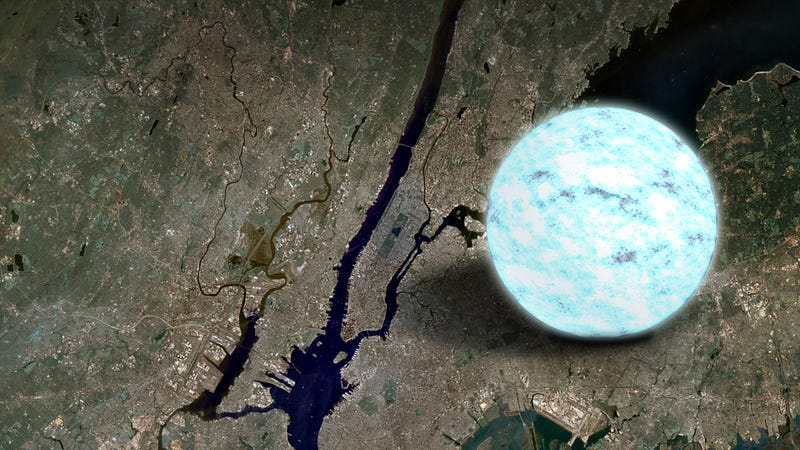The Cosmic Virus: Strange Matter and Neutron Stars
Written on
Chapter 1: The Enigma of Neutron Stars
Neutron stars hold a peculiar secret, containing matter that behaves like a cosmic virus, potentially transforming celestial bodies into lifeless entities.
"King Midas of ancient lore wished for the power to turn everything he touched into gold. While this granted him immense wealth, it robbed him of joy, as even his essentials turned into cold metal. He ultimately begged the gods to retract his wish."
This myth, seemingly far-fetched, bears resemblance to a reality lurking within certain neutron stars. At their cores lies a unique type of matter that excites particle physicists and astrophysicists alike. This strange matter could unlock the mysteries of existence, challenge the Standard Model, and enhance our comprehension of the Big Bang.
However, this remarkable substance carries a Midas-like curse. It is an inert form of matter, capable of converting anything it touches into more inert matter. This phenomenon could potentially spread throughout the universe like a cosmic plague, transforming stars, planets, and asteroids into lifeless, chemically barren entities, ultimately leading to the universe's demise.

Understanding Neutron Stars
Neutron stars are some of the densest objects known, second only to black holes. They are remnants of massive stars that have exhausted their fuel and collapsed under their own gravity.
In stars like our Sun, the heat generated from hydrogen fusion counters gravitational forces, preventing collapse. However, once a star depletes its hydrogen reserves, it succumbs to gravity, compacting so tightly that protons and electrons merge, forming a dense sea of neutrons. Although the science behind this process is intricate, neutron degeneracy and repulsive nuclear forces create enough outward pressure to prevent the star from collapsing into a black hole.
To visualize this, consider a neutron star with half the mass of the Sun, which measures just 12 kilometers (7.5 miles) across, as shown in the preceding image.
Within certain specialized neutron stars lies a deadly form of matter. These stars are denser than typical neutron stars, causing quarks—the building blocks of neutrons—to dissolve and form a quark soup. When this occurs, we no longer refer to them as neutron stars, but rather as quark stars.
Quarks typically prefer to remain paired, even when subjected to substantial energy. However, the immense pressure inside quark stars prevents this pairing, resulting in a disordered collection of individual quarks. There are several quark types: Up, Down, Top, Bottom, Charm, and Strange. While Up and Down quarks constitute most stable matter, some quarks within these stars can transform into Strange quarks, which exhibit unique properties, allowing them to remain stable in this extreme environment.
Historically, protons, neutrons, and electrons were considered the most stable form of matter. However, strange matter—a state comprised of disassociated Strange quarks—may represent an even lower energy state than protons and neutrons. Consequently, while Strange quarks typically decay when paired, a disordered assembly of them could remain stable indefinitely.
Through peculiar nuclear interactions, strange matter can transform other forms of matter, much like a virus. When strange matter encounters normal matter, it converts it into a dense mass of inert Strange quarks.
This phenomenon poses a cosmic threat. If even a minute amount of strange matter were to collide with Earth, it could initiate a catastrophic chain reaction, converting Earth into strange matter and imploding it. The remnants would then propagate throughout the universe, altering everything in their wake.
But is there any cause for alarm? Fortunately, this matter remains confined within neutron stars, as their immense gravitational forces prevent its escape.

The Potential Release of Strange Matter
One can't help but draw parallels between neutron stars and Pandora's box. Just as the box could unleash chaos, neutron stars can expel their core material during collisions, resulting in a spectacular event known as a kilonova. Among the expelled material are tiny droplets of strange matter referred to as strangelets, which could potentially wreak havoc across the universe.
Below, you can view a stunning visualization of two neutron stars colliding, courtesy of NASA.
Additionally, such collision events are predicted to occur frequently in the universe, leading to the distribution of strangelets throughout space, further spreading the devastation associated with strange matter.
However, it's essential to remain grounded in reality. Despite observing the cosmos for millennia, we have yet to witness stars disappearing without reason—an event that would occur if they transitioned into strange matter. Our solar system has remained intact for over 5 billion years.
If our theories regarding strange matter and neutron star collisions hold water, we should observe destruction across the sky. Yet, the absence of such events raises questions about the validity of our theories.
Reevaluating Our Theories
What might be amiss? It’s possible that strange matter isn’t as stable as previously assumed, which would mean it lacks the capacity to convert other forms of matter. This raises the question of whether stable strange matter exists at all or if it merely lacks its transformative properties.
Alternatively, quark stars could be far rarer than anticipated. If strange matter does possess its dangerous traits but is exceedingly scarce, the likelihood of a strangelet threatening a solar system becomes negligible.
However, if the scarcity is accurate, we could still face a long-term threat. Over billions or trillions of years, even a small amount of strange matter could potentially convert our solar system into strange matter, given sufficient time.
Currently, our understanding is limited. Some theories suggest that quark stars may exhibit different surface characteristics than standard neutron stars. Advances in our ability to observe the intricate structures within neutron stars may soon clarify their prevalence in the universe.
Moreover, the Standard Model has its limitations. While it accurately predicts a multitude of outcomes, it stumbles on some key concepts. As experimental facilities like the LHC advance, we may discover that strange quarks behave differently than previously thought, alleviating concerns about their potential dangers.
For now, our theories suggest that this cosmic virus lurks within dense stars and may traverse the universe in tiny fragments. All we can do is gaze at these enigmatic stars and hope that Pandora remains closed, preserving the universe from impending doom.